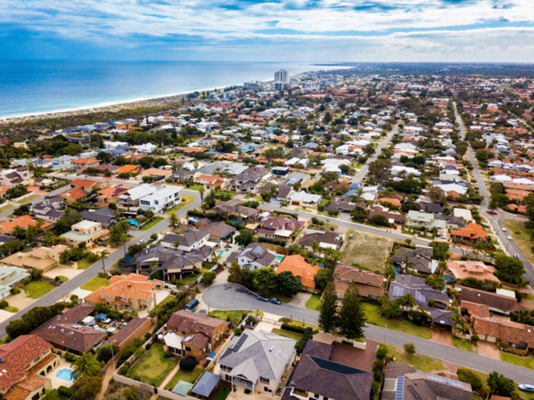
by Margaret Shanafield (Flinders University), Ana Manero (Australian National University), Sally Thompson (University of Western Australia), and Greg Claydon
Few urban home buyers are picking their dream home based on depth to groundwater. Yet that water level can play an important role in the quality of life in their new home. Typically, it is only after moving in that residents realise problems may arise when groundwater is rising or falling.
As urban populations increase, cities all around the world are growing. Often, larger populations are accommodated by expanding the city’s periphery, otherwise known as urban sprawl. As preferred building sites are taken, such expansion can force urban development into less favourable areas such as swampy sites with shallow groundwater.
Why is shallow groundwater a problem?
Let’s take Perth, the capital of Western Australia, as an example. As the population grows, the city sprawls beyond the areas that are ideal for building and into low-lying areas between coastal dunes. In these areas, groundwater comes up to the surface in the wet winters, potentially flooding homes, infrastructure, and public open spaces. Despite the imminent risk, building practices have been slow to change, and continue to foster a demand for double-brick houses on concrete slabs. This traditional house design is not well suited to accommodate seasonal water level fluctuations. Consequently, new developments often require several metres of sand fill to elevate the ground level. This practice is expensive and detrimental to the environment. Where design mistakes are made or significant groundwater changes occur (e.g. due to additional local development), the groundwater may still damage housing and infrastructure. This is costly to repair for homeowners and local government authorities.
What’s different about Perth?
Perth is not the only place in the world that has seasonally high groundwater. There are strong parallels with Seattle, the Netherlands, and deltaic cities in many other regions of the world. One of the differences, though, is in expectations. Perth is a relatively dry place, and declining groundwater levels impact much of the city. Seasonal groundwater flooding of houses and parks in new urban developments is an unexpected problem to which locals are not accustomed. Aussies want to play “footie”, soccer, and rugby all through the winter without sinking into the mud!

Figure 2: Dealing with seasonally shallow groundwater is partly about community expectations: should public open space remain dry during the wet season?
Looking to the Future
Our recent study looked at how to move forward. By listening to local practitioners in consulting and the building industry, local and state government, and applying our scientific understanding, we’ve made a first step. We identified three key challenges to overcome: i) lack of data to accurately predict future groundwater fluctuations; ii) limited human and technical resources within public authorities that approve and manage new urban developments; iii) reluctance to adopt groundwater-savvy home designs.
We propose several ways forward. First, groundwater risks should be planned for at regional scales, taking into account cumulative impacts by multiple developments – as opposed to the current process where impacts are assessed independently from each other. Second, integrated water panning could offer ‘divert and reuse’ solutions, whereby shallow, winter groundwater is drained and used for summer irrigation or other beneficial uses. Further, damages and nuisances caused by seasonal flooding could be reduced (or even avoided) through ‘lightweight’ home designs and floodable public open spaces.,
This transformative process will be particularly useful for cities where there is increasing development in areas that experience seasonally high groundwater, and where the possibility of groundwater creeping up from below has only recently garnered attention.
[1]https://watersensitivecities.org.au/content/guiding-urban-water-management-in-areas-that-experience-high-seasonal-groundwater-expert-panel-report/
[2] https://link.springer.com/article/10.1007/s11269-020-02620-6
[3] https://www.pps.org/article/resilience-roundup-public-spaces-fighting-climate-change




